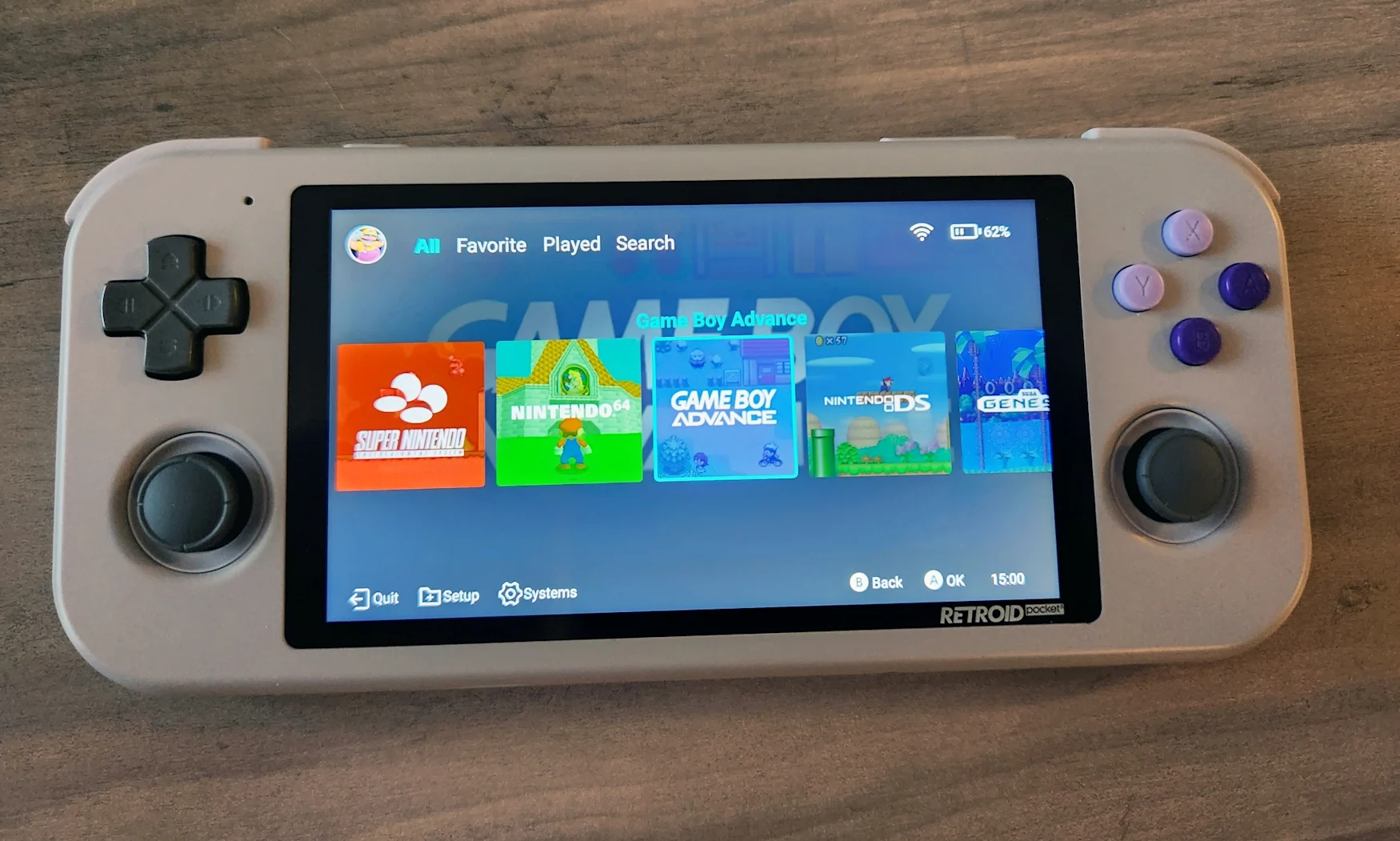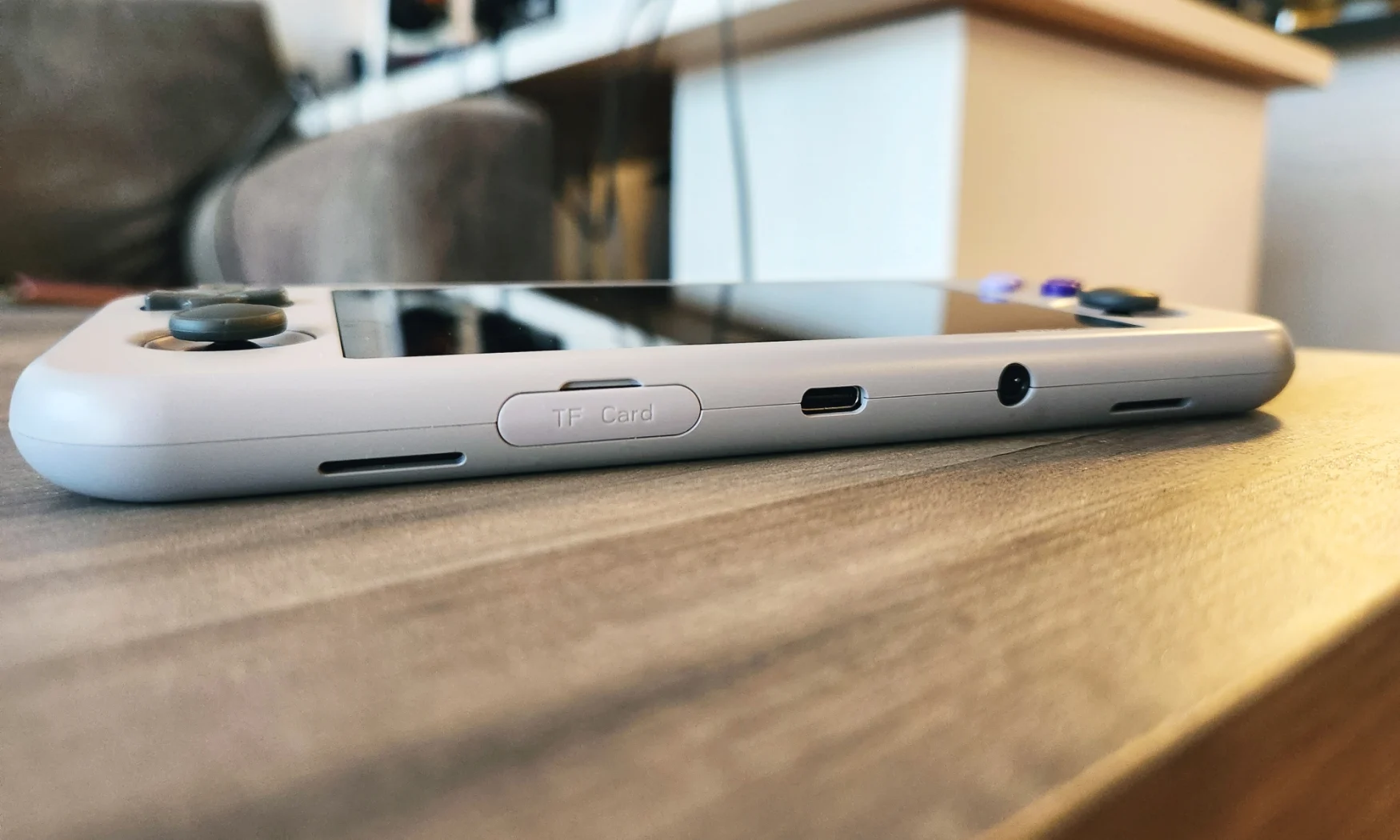What we bought: The Retroid Pocket 3 is my own personal retro-game museum
All products recommended by Engadget are selected by our editorial team, independent of our parent company. Some of our stories include affiliate links. If you buy something through one of these links, we may earn an affiliate commission. All prices are correct at the time of publishing.
I’ve become increasingly infatuated with old video games. Lord knows I still play lots of new stuff, but more and more, the loudest parts of modern gaming – the live services explicitly designed to monopolize your attention, the market-tested blockbusters devoid of any edge, the constant stream of power fantasies – bore me. Being old doesn’t make a game good, but when I go back to my favorite retro games, I find a focus and honesty in their design that I don’t see in many of the more acclaimed games of today.
I took to collecting old games and consoles a couple of years ago – in just one of the many ways the pandemic broke my brain – but actually enjoying those on a modern TV is notoriously annoying. And while I could always emulate the classics on my phone or PC, I liked the idea of keeping my retro library on a distinct machine, something I could fire up when I’m in the mood but just as easily walk away from when I’m not.
So, recently I took my first dip into the world of retro handhelds – portable, often Chinese-made devices designed to house and run emulated games wherever you’d like. I settled on the Retroid Pocket 3, an Android-based model that starts at a relatively affordable $119 and comes from a series that had received mostly positive word of mouth in the past. (It has also been available on Amazon for $160, typically with faster shipping.)
Three months later, I’m still happy with it. The Retroid Pocket 3 is one of those “for the price” situations, but, for the price, it’s a fine piece of hardware. If you’ve ever held a Nintendo Switch Lite, the Retroid Pocket 3 will feel like a slightly smaller version of that. It doesn’t have the ergonomic grips of a Steam Deck, but it’s a smooth slim slab, light and small enough to not feel seriously fatiguing over time, and easily portable.
Jeff Dunn / Engadget
Its 4.7-inch display is big and sharp (750×1334) enough for something I hold a foot from my face, and it has a 16:9 aspect ratio that plays nice with remote streaming and more recent platforms like PSP. (It does result in some hefty black bars with older games originally designed for 3:2 or 4:3 displays, but I got used to those quickly enough.) The LED panel isn’t as vibrant as the OLED screens on newer smartphones, but it’s never come off as noticeably compromised either. Its color saturation and brightness is excellent for a cheap handheld, and it’s not impossible to see outside. Plus, it’s a touchscreen, which makes getting around Android easier.
All the requisite buttons for modern gaming are here as well. There are trade-offs: The four face buttons are beady and on the clicky side, the start/select buttons are placed weirdly on the side, and the triggers aren’t analog, so they can’t respond to different levels of pressure. But everything is fast to actuate and spaced well enough to avoid accidental inputs. The joysticks work as clickable L3 and R3 buttons, too, which isn’t a given with devices like these. I did have an issue with the R1 button sticking down, but that seemed to resolve itself after a couple of days. I’ll chalk that up to the pains of buying from a little-known company.
If you want the D-pad and face buttons to have a softer feel, Retroid actually includes alternative switches in the box. It sells other replacement parts on its website, too. That’s commendable for a worst-case scenario, but the default should be good enough for most to avoid taking on any DIY risks. One thing that isn’t included, though, is a case; I dug around and bought this old one for the PS Vita instead, and it’s done the job.
Retroid sells the Pocket 3 with either 2GB or 3GB of RAM. The latter only costs $10 more, so there’s little reason not to take the memory boost. The processor in this thing is far from a powerhouse; it’s built to emulate old games that don’t need a ton of processing power and last for 5-6 hours while doing that. Pretty much everything from the 8- and 16-bit eras runs perfectly smooth here, as do lower-power handhelds like the Game Boy Color, Game Boy Advance, and even the Nintendo DS. I’ve had few issues with early 3D games from the PlayStation 1 or Sega Dreamcast, too. Getting Nintendo 64 games to work requires a bit of control mapping in your emulator – I mean, look at this thing – but once that’s settled, that one is basically perfect as well.

Jeff Dunn / Engadget
Things start to get spottier once you get to the most demanding PSP games – think God of War: Chains of Olympus – but even then I was able to play stuff like Grand Theft Auto: Vice City Stories (which isn’t purchasable on any modern platform) at double its native resolution with only the occasional slowdown. The cut-off here is PlayStation 2 and GameCube – those generally require just a bit more resources than the Retroid Pocket 3 can supply. But that still leaves decades of gems. Having Super Mario RPG or the original Metal Gear Solid playable in my hand, with higher-resolution textures and instant save states, is still kind of surreal.
The catch, as with many Android handhelds, is actually getting everything to work. When you first load up the Pocket 3, Retroid helpfully suggests a few recommended emulators you can install right away. If you’re new to this, though, you’ll then have to go through a labyrinthine maze of reading massive tutorials, watching 30-minute YouTube videos, tweaking dozens of settings across multiple apps, customizing hotkeys, cross-checking box art, and actually downloading the proper ROM and BIOS files for your games. And that’s not to mention how owning ROM files exists in a legal gray area. (Engadget does not condone piracy.) I spent more time optimizing RetroArch and organizing Retroid’s (attractive) launcher in my first two days with the Pocket 3 than actually playing games. There’s a reason people like this are mocked.
With the busywork done, though, I’ve found digging into my curated selection of the past refreshing. When I go back to NHL ‘94, I see a sports game that respects my time (and wallet). When I revisit Ridge Racer Type 4, I see a driving game intently focused on one pleasure (cruising around). When I play Link’s Awakening, I see a sequel in a wildly popular series that isn’t afraid to be weird and take risks. When I return to Shenmue, I see a game that revels in patience and refuses to constantly coddle me. It’s not that no modern games do these things, but it’s fascinating to see what some developers valued with far fewer resources. Here, I can get these history lessons on one handheld, in the span of one night.

Jeff Dunn / Engadget
My only major complaints have less to do with the Pocket 3 than Retroid itself. Between the time I started writing this article and the time you’re reading it, Retroid launched a new Pocket 3+ handheld just three months after releasing the Pocket 3. There were suggestions that Retroid was using the Pocket 3 to clear out inventory at launch, so to see a follow-up so soon feels scuzzy. The new model has a similar design but 4GB of RAM and a faster processor; it’s still not great for GameCube and PS2 emulation by most accounts, but it can run more of those games, and it’s better with borderline systems like the PSP. At $149, it’s now the superior value, though the Pocket 3 remains a fine option for slightly less cash.
That said, new hardware launches at a breakneck pace in this market, and there’s long been a million different ways to play old games. Among handhelds alone, options like the Steam Deck, Analogue Pocket, Miyoo Mini, Anbernic RG353M and RG505, Ayn Odin Pro and Aya Neo 2 all promise retro gaming goodness at varying price points. But the Retroid Pocket 3 works for me. It required a good chunk of homework at first, but it’s since become a capable emulator and my own personal museum to classic game design.
For all the latest Technology News Click Here
For the latest news and updates, follow us on Google News.
